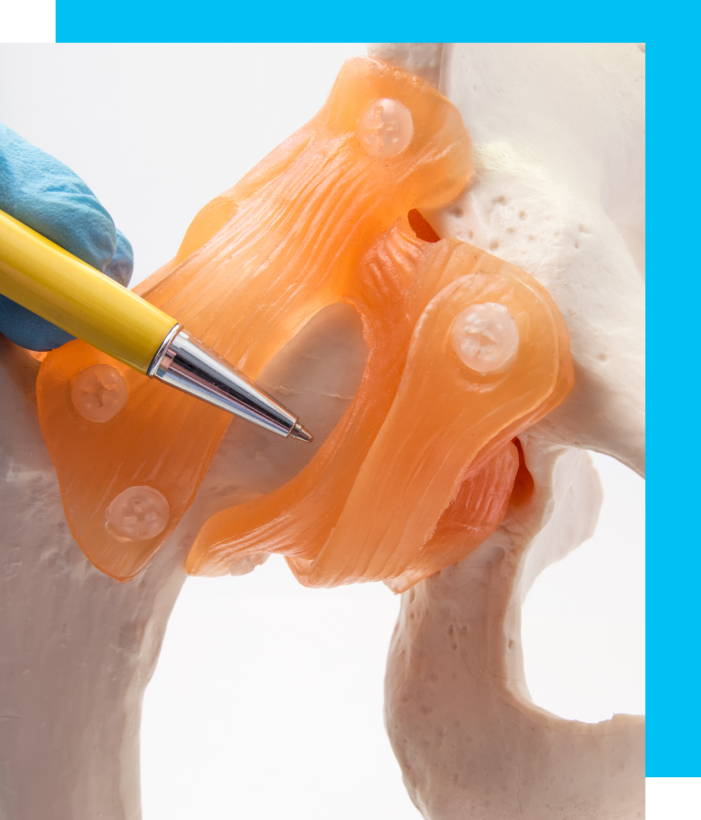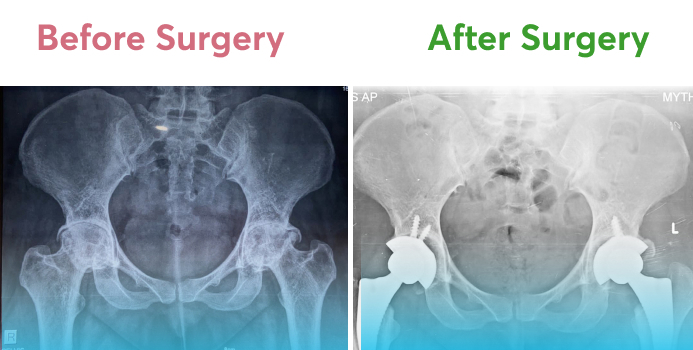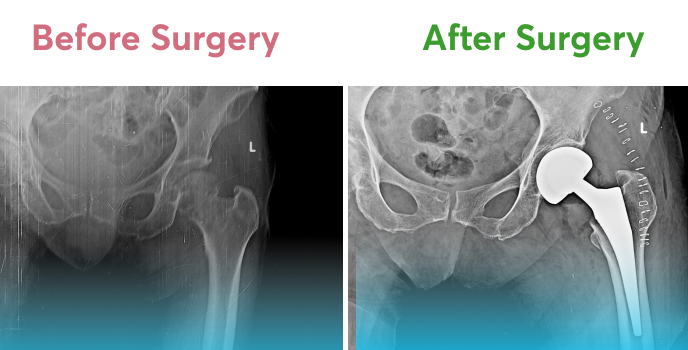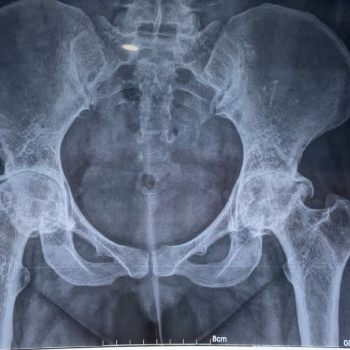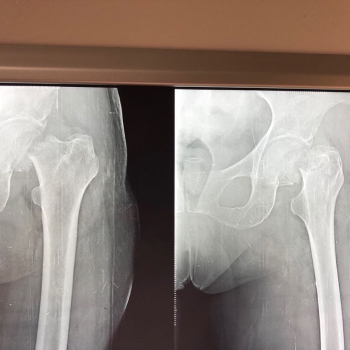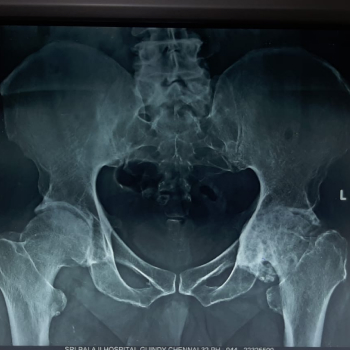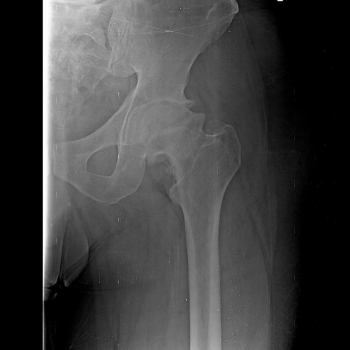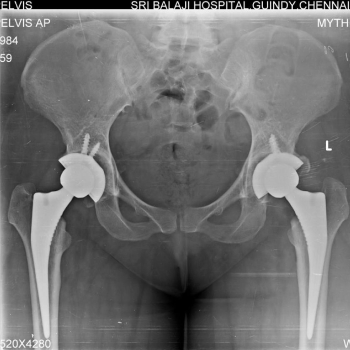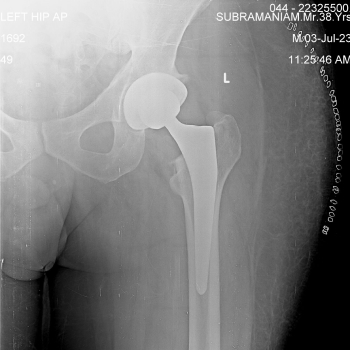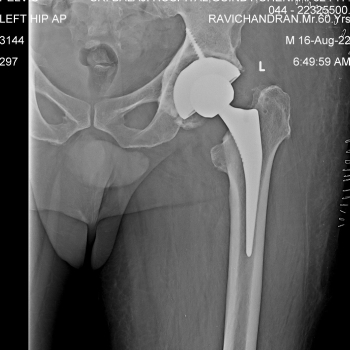A joint is any place in your body where two bones meet. One of the most important joints is the hip joint, which connects your upper and lower body. The hip joint is a ball-and-socket joint and one of the largest joints in the body, comprising your pelvis (hip bone) and femur (thigh bone). This joint enables your legs to support your body weight and offers a wide range of motion for your legs and hips.
